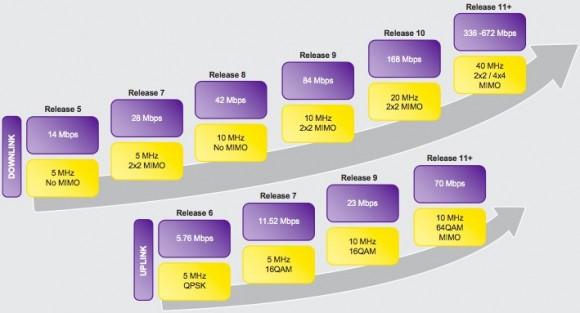Forget HSPA+ And LTE, LTHE Is The Way To Go
Sure, HSPA+ is all the rage right now for T-Mobile, but what about the future? While HSPA+ can reach 42Mbps, what will T-Mobile do when LTE starts to really take off? As always, though, T-Mobile has us covered. Today T-Mobile announce a partnership with Nokia Siemens Networks to help deliver Long Term HSPA Evolution, or LTHE. We are talking speeds of 650 Mbps that could be ready by 2013, theoretically. Here I thought my HSPA+ speeds were doing the trick, not so much anymore. One of the better parts of this development is backward compatibility, so you shouldn’t need new hardware like what those other two carriers make you purchase. There are a bunch of other (really boring) facts about LTHE, but you can read those your self. Press release down bellow and don’t forget to leave your thoughts in the comments!
T-Mobile USA, Nokia Siemens Networks drive evolution of HSPA
Mobile leaders promote standardization of Long Term HSPA Evolution to unleash speeds of more than 650 Mbps
Operators would be able to achieve peak data rates of more than 650 megabits per second (Mbps), thanks to an HSPA standard being driven by T-Mobile USA and Nokia Siemens Networks. Long Term HSPA Evolution would improve mobile broadband with speeds matching those promised by LTE Advanced. T-Mobile USA and Nokia Siemens Networks are driving the technology’s standardization aiming to make it available for commercial deployment by 2013.
The proposed key features of Long Term HSPA Evolution were accepted during the plenary meeting of 3GPP RAN held on 7-10 December, 2010*.
“We strongly believe in continued HSPA evolution in parallel to the further development of LTE and LTE Advanced,” said Neville Ray, chief technology officer, T-Mobile USA. ‘’Long Term HSPA Evolution will allow us to enhance our 4G mobile broadband network beyond its current and planned near term capabilities, and provide room for considerable growth and speed enhancements. As customer demand for wireless data increases, we are well positioned to compete based on the speed, breadth and evolution path of our mobile broadband service.”
“The demand for higher data rates and mobile broadband growth continues to push the need for advances in both HSPA and LTE technologies,” added Keith Sutton, head of the WCDMA business line for Nokia Siemens Networks. “We are thus equally committed to both technologies. As a leader in HSPA evolution, we have already demonstrated data rates exceeding 100 Mbps at the Mobile World Congress earlier this year. Today, we also have the largest number of HSPA customers with nearly 200 operators worldwide. Driving the standardization of the new technology is a natural extension of our efforts to realize the full potential of HSPA.”
Nokia Siemens Networks’ Single Radio Access Network (RAN) platform is already prepared for Long Term HSPA Evolution. Operators would have a smooth evolution path to handle increased network traffic along with controlling costs with the introduction of the new technology.
In addition, all Long Term HSPA Evolution features are backwards compatible and can be used together with existing WCDMA and HSPA mobiles on the same carriers.

